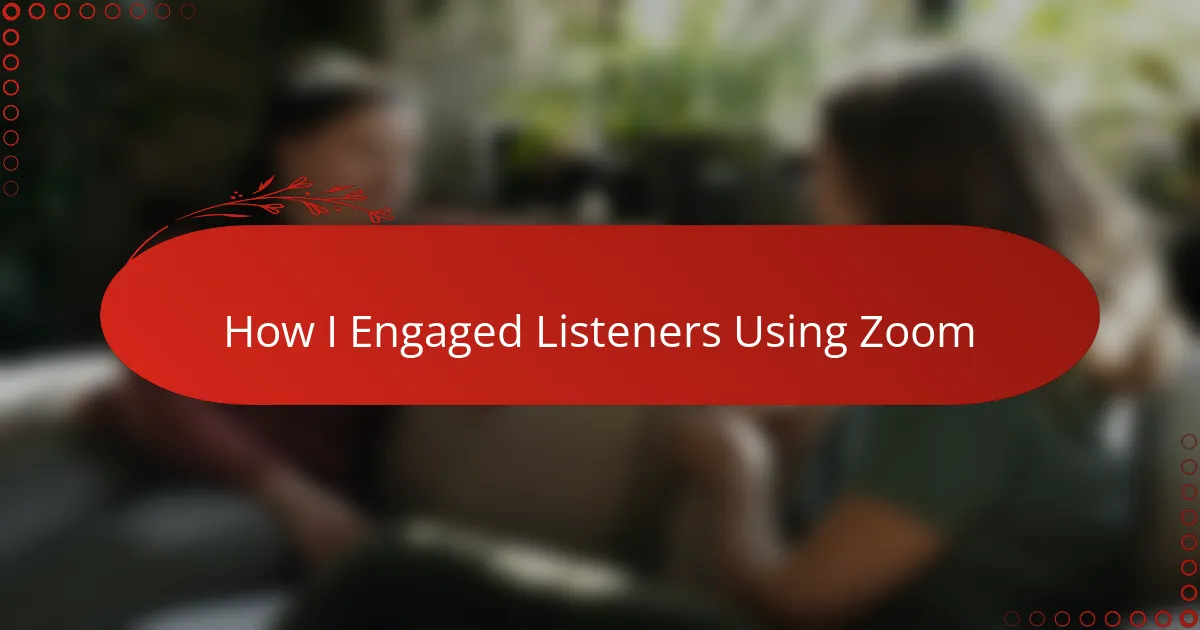Key takeaways
- Zoom enhances radio broadcasting by facilitating real-time interaction, creating a sense of community and emotional engagement between hosts and listeners.
- Features like screen sharing and breakout rooms support creative storytelling, allowing hosts to blend visual elements with audio for a richer experience.
- Active listener involvement through techniques such as polls, personalized acknowledgments, and reactions boosts engagement and fosters genuine connections.
- Technical preparedness and maintaining warmth in communication are essential for overcoming challenges and ensuring a successful broadcast experience.
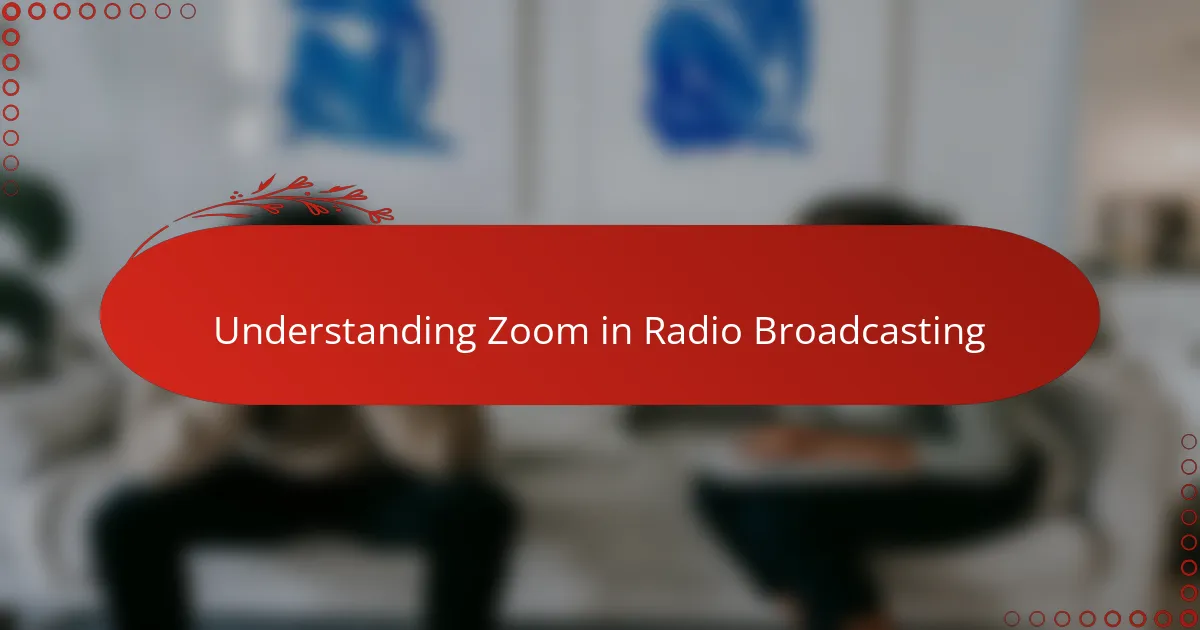
Understanding Zoom in Radio Broadcasting
When I first brought Zoom into my radio broadcasting workflow, I was amazed at how it transformed the way I connected with my audience. Unlike traditional radio, where the interaction feels one-sided, Zoom allows me to see and hear listeners in real time, creating a dynamic exchange that breathes new life into each broadcast. Isn’t it incredible how a simple platform can shift the entire energy of a show?
What really struck me was how Zoom breaks down the usual barriers between broadcaster and audience. I remember feeling a genuine sense of community as listeners joined the live call, sharing their thoughts and reactions instantly. This level of engagement brought an emotional depth to the show that a standard radio wave simply can’t convey.
Zoom also offers practical tools that enhance storytelling in radio. Features like screen sharing and breakout rooms enable me to mix interviews, visual elements, and group discussions seamlessly. Have you ever thought about how combining visual cues with audio can deepen listener understanding? In my experience, Zoom makes this possible without losing the essence of radio’s intimacy.
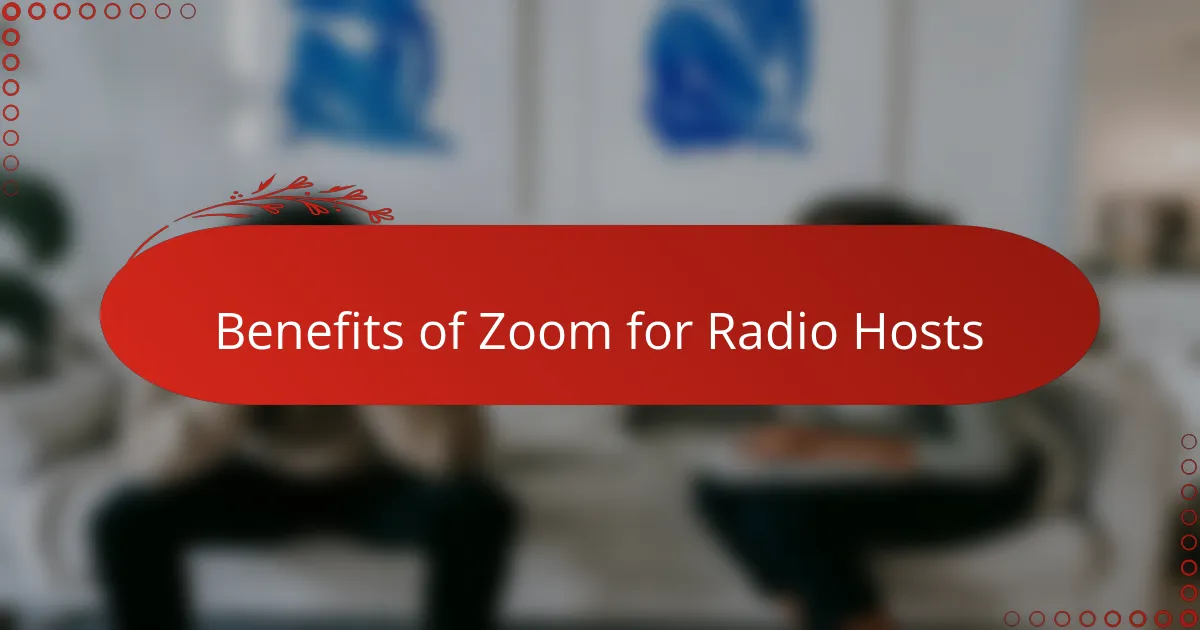
Benefits of Zoom for Radio Hosts
One of the biggest benefits I found using Zoom as a radio host is the instant feedback from listeners. Being able to see their reactions and hear their voices adds a richness to the broadcast that I never experienced before. Don’t you think radio feels much more alive when it’s a two-way conversation rather than just a one-way announcement?
Another advantage is the ease of bringing guests into the show, no matter where they are in the world. I remember hosting an interview with a musician sitting thousands of miles away, and the connection felt surprisingly intimate. Zoom’s reliability and crystal-clear audio made it possible to keep the energy flowing naturally, just like in a studio.
What really sells Zoom for me is how its features support creative storytelling. Sharing screens to show visuals or using breakout rooms for small group chats opens up new ways to engage listeners. Have you ever wished you could offer more than just a voice on the air? Zoom lets me do exactly that, blending sights and sounds to create a fuller, more memorable experience.
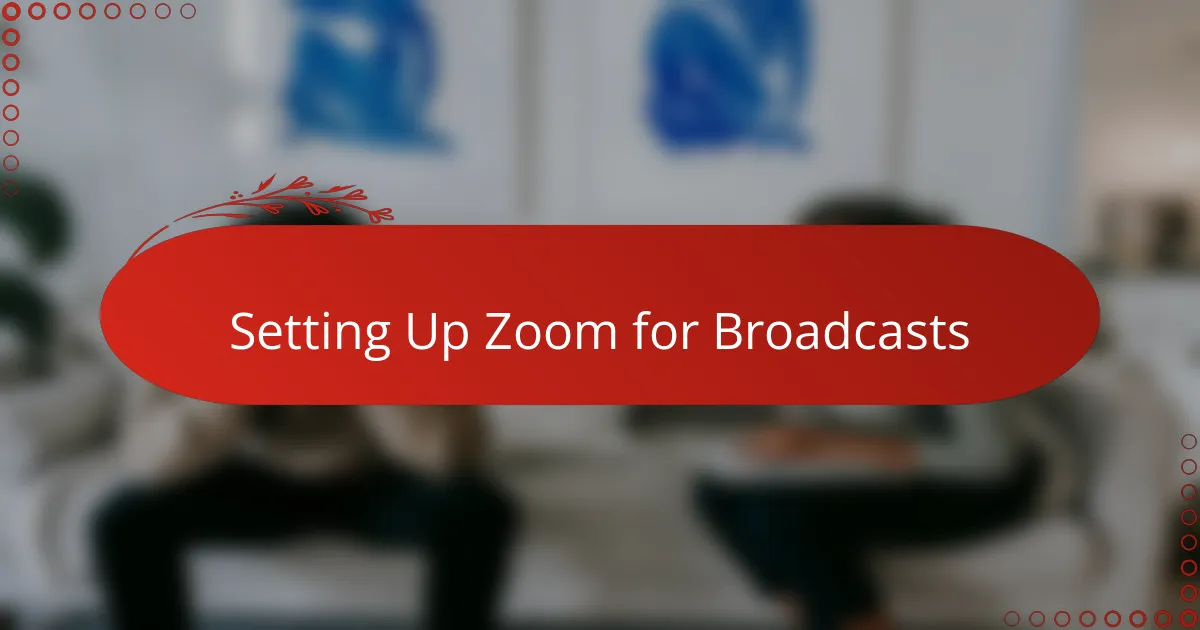
Setting Up Zoom for Broadcasts
Setting up Zoom for broadcasts was surprisingly straightforward once I knew what to prioritize. I always make sure to test my audio and video settings before going live—there’s nothing worse than technical glitches disrupting the flow. Have you ever felt that panic when your microphone suddenly stops working mid-show? Eliminating that feeling beforehand makes all the difference.
I also learned that customizing Zoom’s settings plays a huge role in maintaining broadcast quality. Disabling unnecessary notifications and enabling “Original Sound” helps preserve the richness of voices, which is so crucial in radio. It’s these small tweaks that, in my experience, separate a good broadcast from a great one.
One trick I swear by is setting up a waiting room for guests. It gives me control over who joins and when, so I can prepare the show’s flow smoothly without unexpected interruptions. Managing participants this way made me feel more confident and professional on air—something every radio host wants, right?
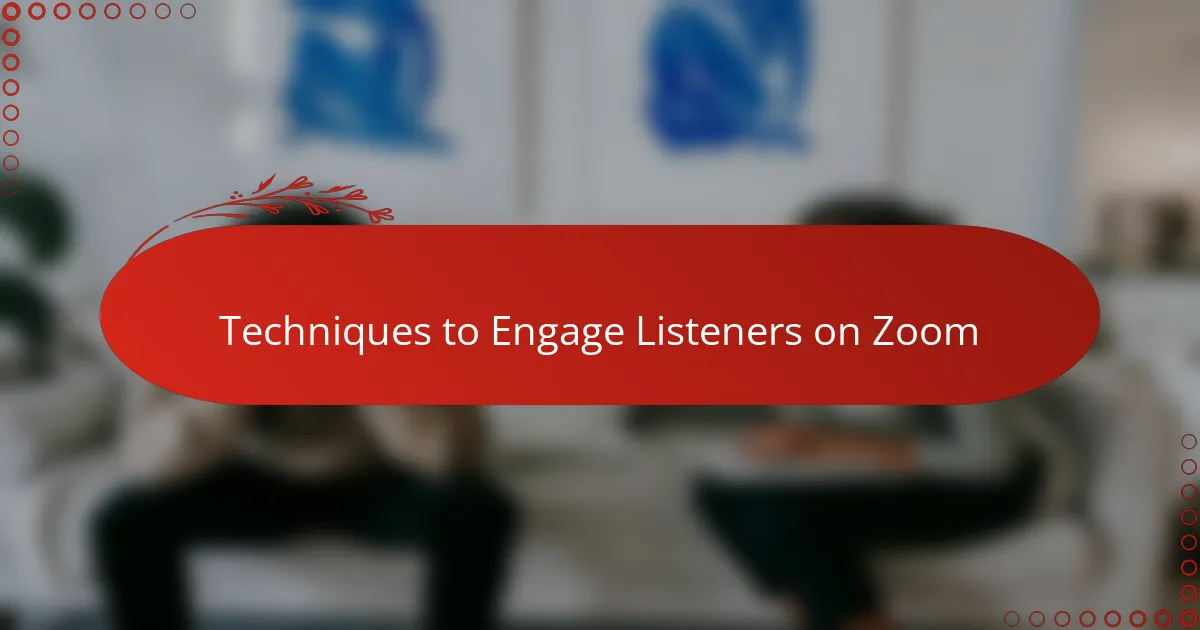
Techniques to Engage Listeners on Zoom
Engaging listeners on Zoom means going beyond just speaking into the microphone—I’ve found that actively involving my audience through live polls and Q&A sessions really keeps their attention. Have you ever noticed how people light up when their opinion is heard in real time? It’s like turning a silent crowd into an energetic conversation, and that energy fuels the show.
Another technique I rely on is calling out listeners by name whenever they contribute. It might seem small, but acknowledging someone personally creates a warm connection that feels genuine and immediate. In one broadcast, a shy listener opened up after I mentioned her name, and that moment gave the whole show a refreshing burst of authenticity.
Sometimes I use Zoom’s chat function to invite listeners to share thoughts or ask questions during the broadcast. I remember how this turned a routine segment into a lively exchange, almost like a virtual town hall. Don’t you think radio feels more alive when the audience becomes part of the story rather than just passive listeners?
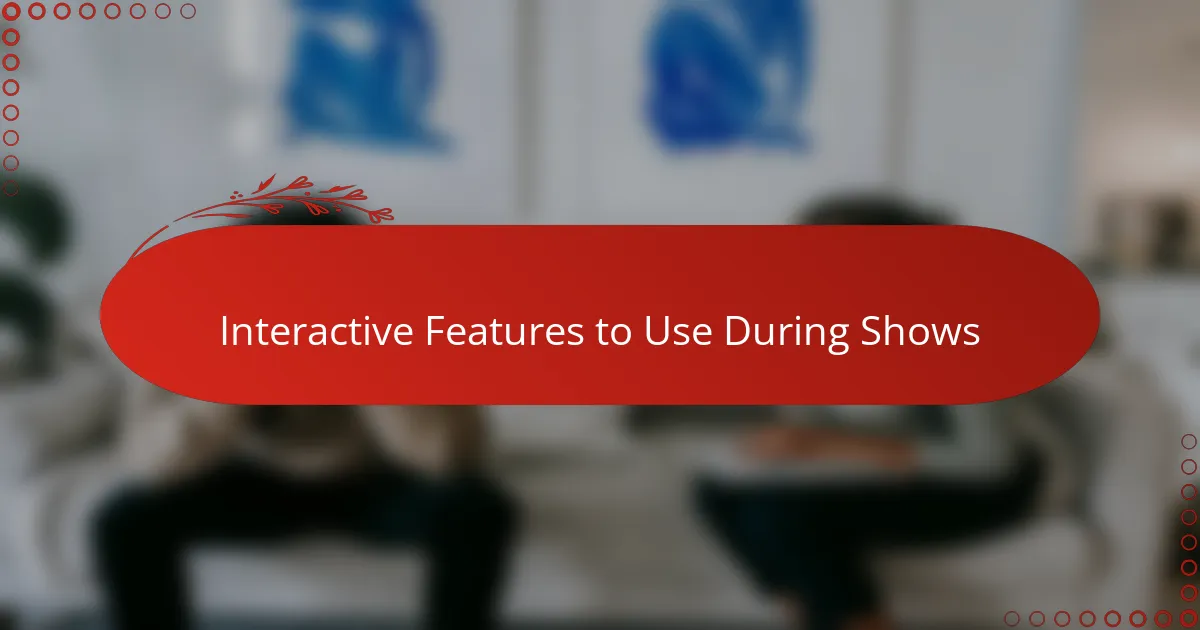
Interactive Features to Use During Shows
One of my favorite interactive features on Zoom has been the use of reactions like thumbs up or clapping during live shows. It might sound simple, but seeing those little icons pop up in real time instantly lifts the atmosphere. Have you ever noticed how just a tiny sign of approval can motivate both the host and the audience? For me, those moments spark an unspoken connection that no traditional radio wave could capture.
Screen sharing has also become a game changer. I recall a broadcast where I pulled up album art and lyrics while chatting with a guest musician—it added layers to the conversation that listeners really appreciated. Incorporating visual elements doesn’t steal away from the audio experience; instead, it enriches it. Don’t you think showing, not just telling, makes stories stick better?
Breakout rooms surprised me the most in terms of engagement. Splitting listeners into smaller groups during certain segments created space for deeper conversations and even spontaneous interviews. I once watched shy participants open up when they felt like part of a smaller circle rather than a large crowd. Isn’t that what true connection is about—making people feel seen and heard?
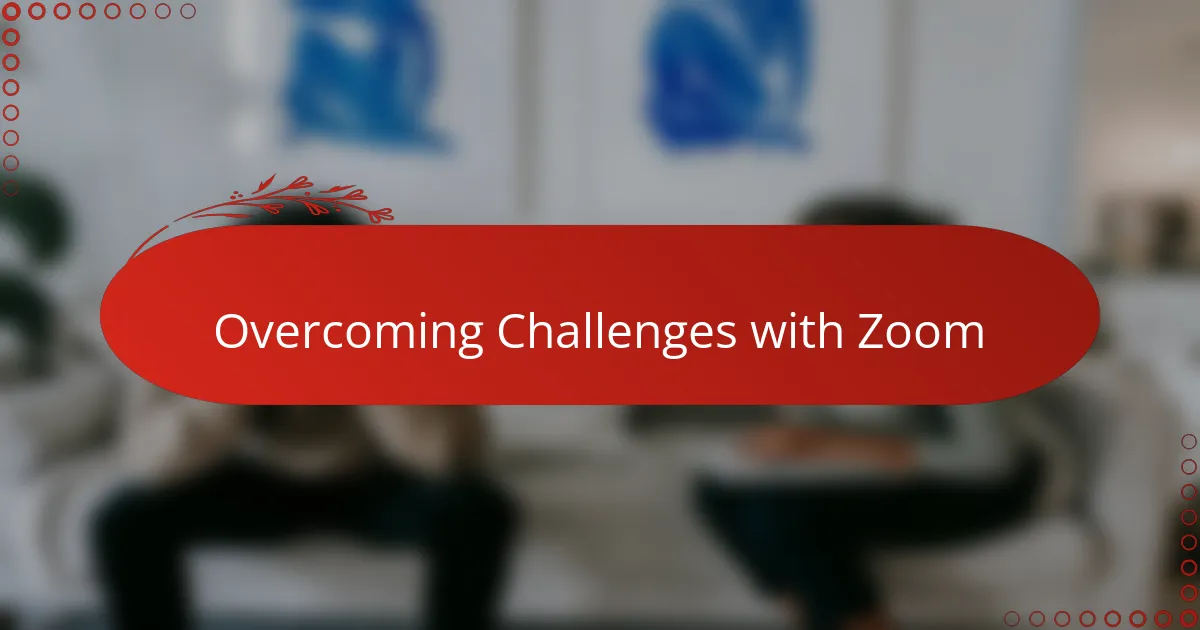
Overcoming Challenges with Zoom
When I first faced technical hiccups on Zoom—like lagging audio or frozen screens—it felt like the show was slipping through my fingers. But I soon realized that having a reliable backup plan, like a second device ready to jump in, took away so much stress. Have you ever experienced that moment when a glitch hits live? Being prepared made me breathe easier and focus on the conversation instead of the chaos.
Managing the energy of a virtual room was another challenge. Listeners sometimes drifted away or stayed muted, which made me feel like I was talking into the void. I found that calling on people by name or encouraging them to use reactions helped bring them back in. Doesn’t it feel great when you can actually see your audience light up, even through a screen?
Lastly, balancing technology with warmth took some practice. It’s easy to get caught up in adjusting settings or managing participants and forget the heart of radio—connecting with people. I remind myself to slow down, smile, and speak as if the listener is right there in front of me. Isn’t that what makes radio, even on Zoom, so special?
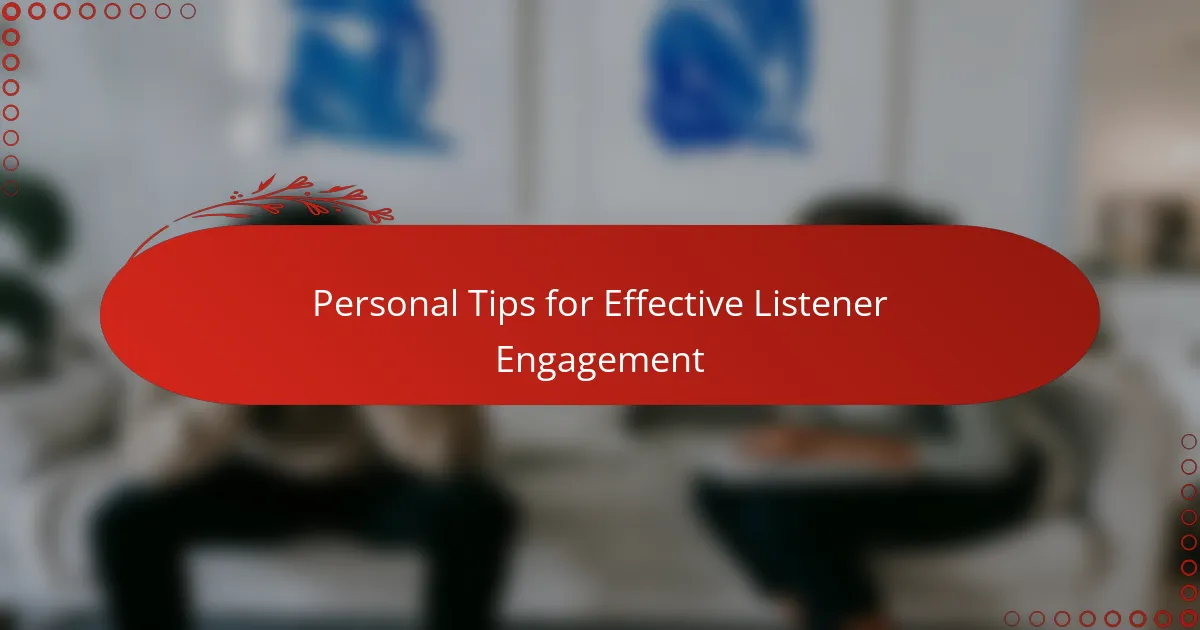
Personal Tips for Effective Listener Engagement
One personal tip I swear by is maintaining eye contact through the camera. It might sound simple, but looking directly into that tiny lens creates a sense of intimacy that really pulls listeners in. Have you ever noticed how when you catch someone’s eyes, even virtually, it feels like they’re speaking just to you? That connection keeps engagement alive in ways words alone can’t.
I also learned the hard way that pacing my speech matters more on Zoom. Speaking too quickly often lost some listeners, especially when internet delays caused overlaps or missed words. By slowing down and pausing intentionally, I gave people space to react and jump into the conversation—making everything feel more natural and inclusive.
Finally, don’t underestimate the power of genuine gratitude. I always take a moment to thank listeners by name after they share a thought or question. It transforms the broadcast from a one-sided show into a shared experience. Have you ever felt that warmth when someone acknowledges you personally? That’s exactly the kind of atmosphere I strive to create with each Zoom session.
